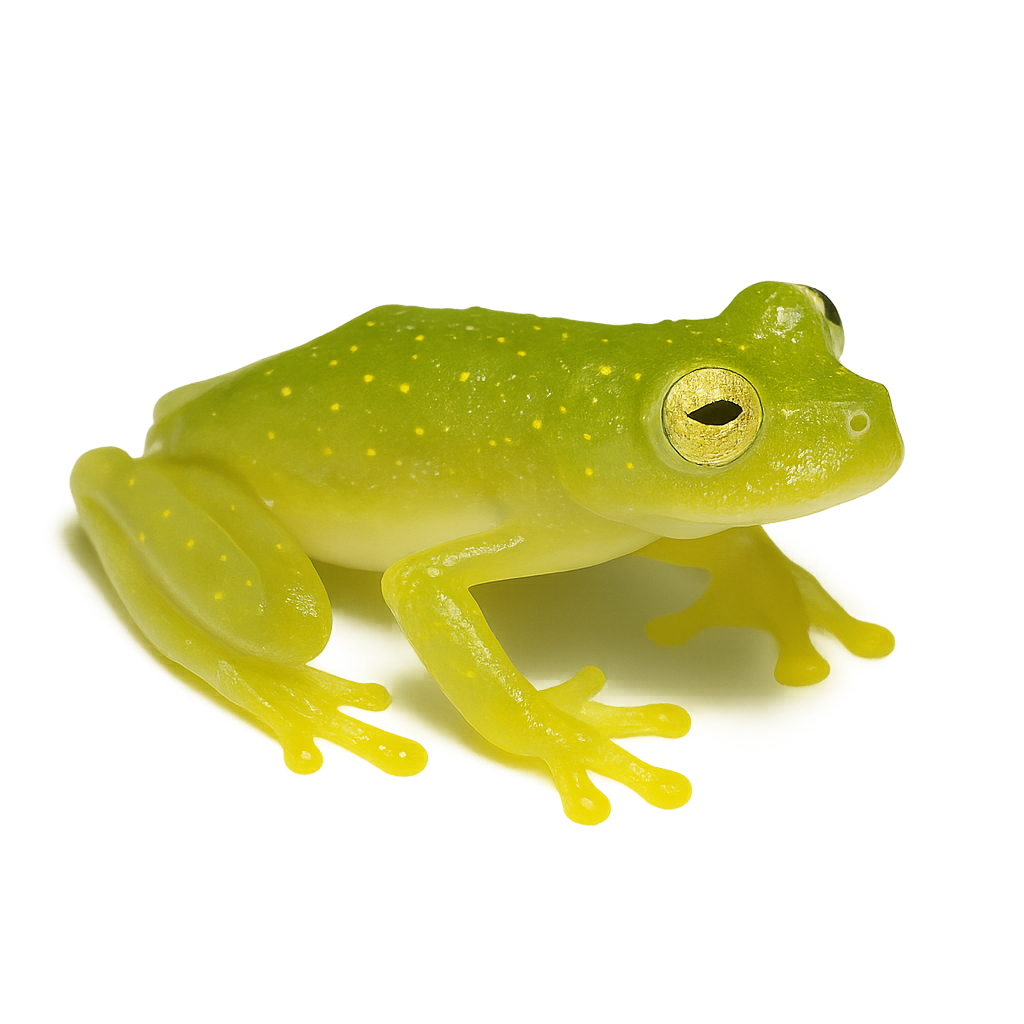Observe and photograph a species in its natural habitat
Learn where and when to observe a species in the wild, how to recognize it in the field, and what habitats it lives in. Get photography tips adapted to its behavior and capture stunning images without disturbing the animal. For full details, open the complete profile in the WildlifePhotographer app.
Green glass frog
Scientific name: Hyalinobatrachium colymbiphyllum

IUCN Status: Least Concern
Family: CENTROLENIDAE
Group: Amphibians
Shyness: Somewhat shy
Safe distance: 5 m
Breeding season / Courtship: 01.05-15.06
Gestation: 20 a 25 días
Births: 15.06-20.06
Habitat:
Humid tropical forests, riverbanks, and streams
Description:
The Glass Frog is a fascinating species of amphibian, known for its translucent skin that allows its internal organs to be visible. It typically measures between 2 and 3 cm long and is commonly found on leaves hanging above streams in the tropical rainforests of Central and South America. Its transparent skin serves as an excellent camouflage, helping it blend seamlessly into its environment. This frog’s ability to blend with the vegetation, combined with its small size, makes it hard to spot. Its eggs are laid on leaves above water, and the tadpoles fall into the water once they hatch. This species is nocturnal and somewhat shy, preferring to avoid human interaction.
Recommended lens:
>=Macro
Photography tips:
Photograph the Glass Frog using soft lighting, preferably at night, to capture its translucent colors without disturbing it. Be discreet and avoid getting too close, as it could disturb the animal. Use a macro lens to capture the details of its internal organs visible through its skin while respecting its natural habitat. Never disturb its eggs or breeding area. Try capturing the camouflage effect by shooting with a shallow depth of field to isolate the subject while blurring the background.
Ready to take action?
Choose your platform and start your free trial today



